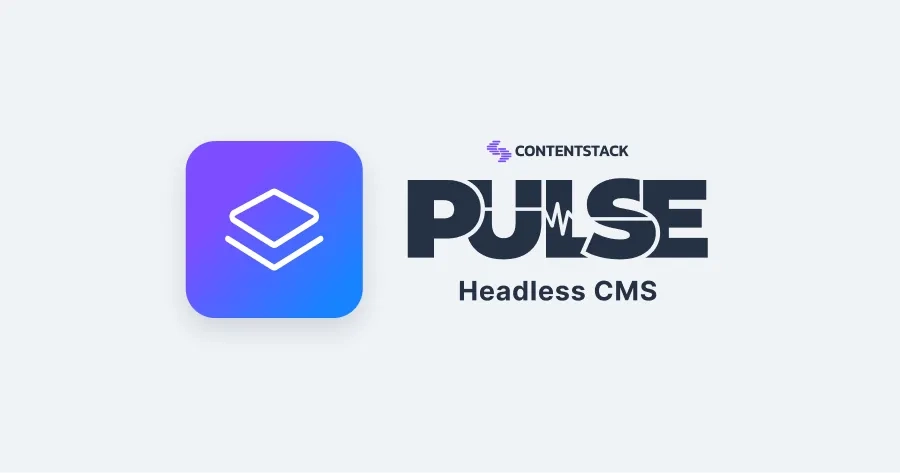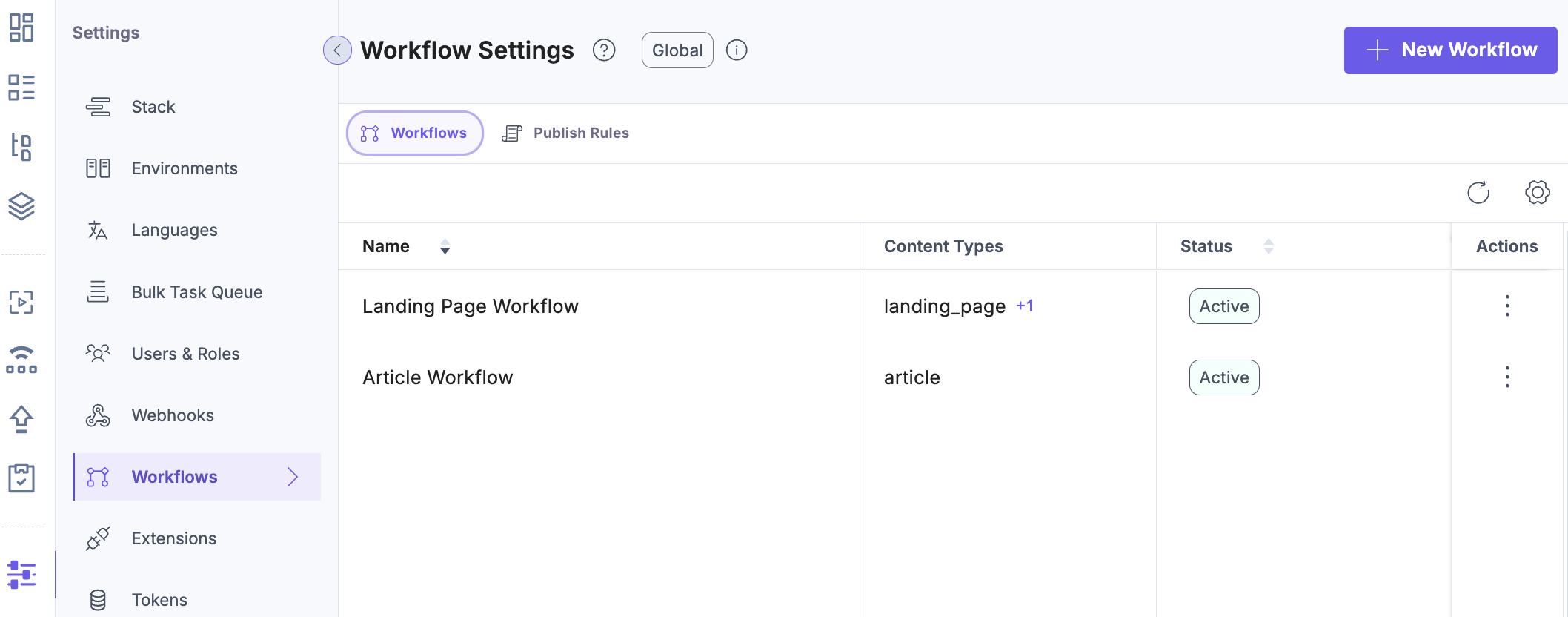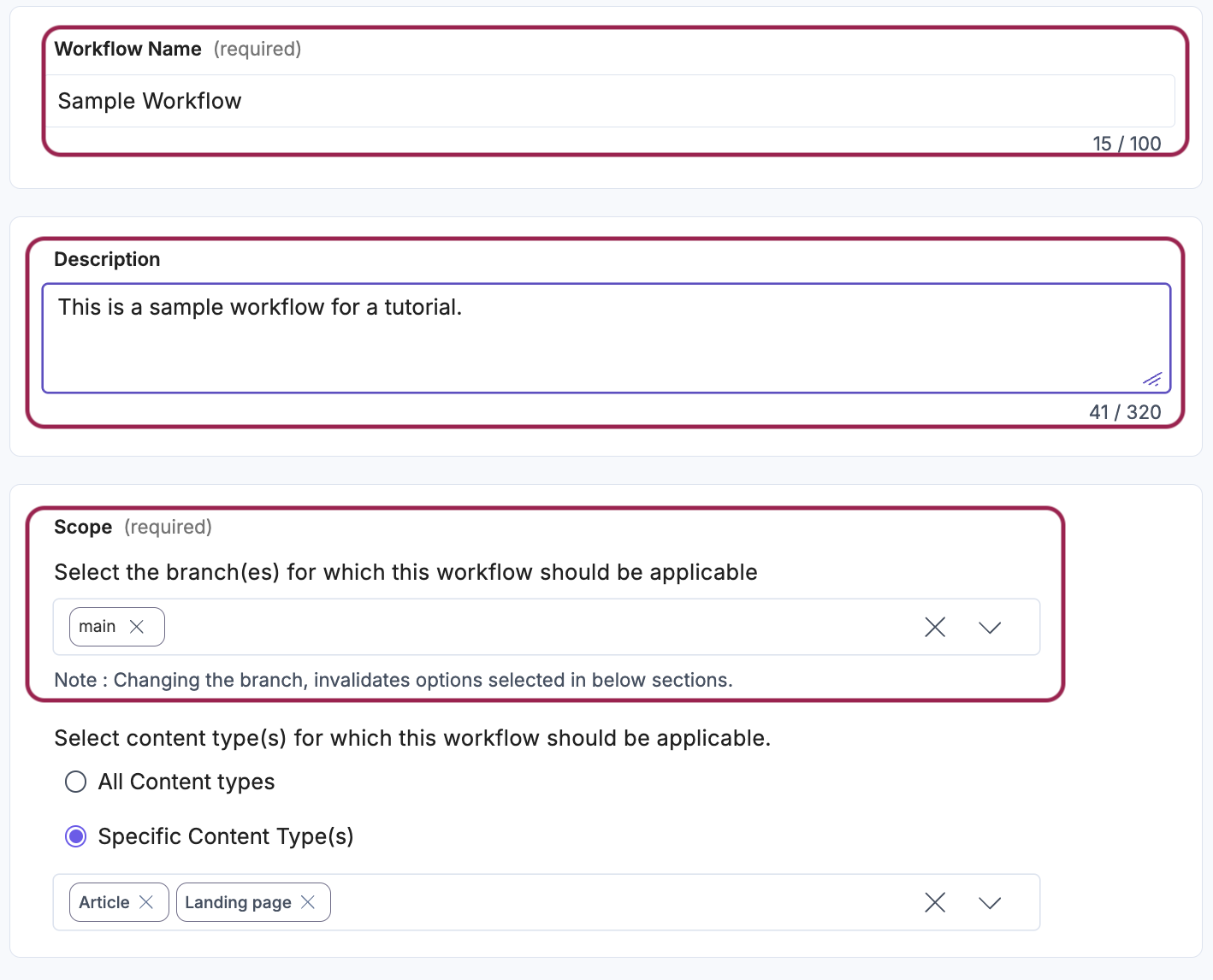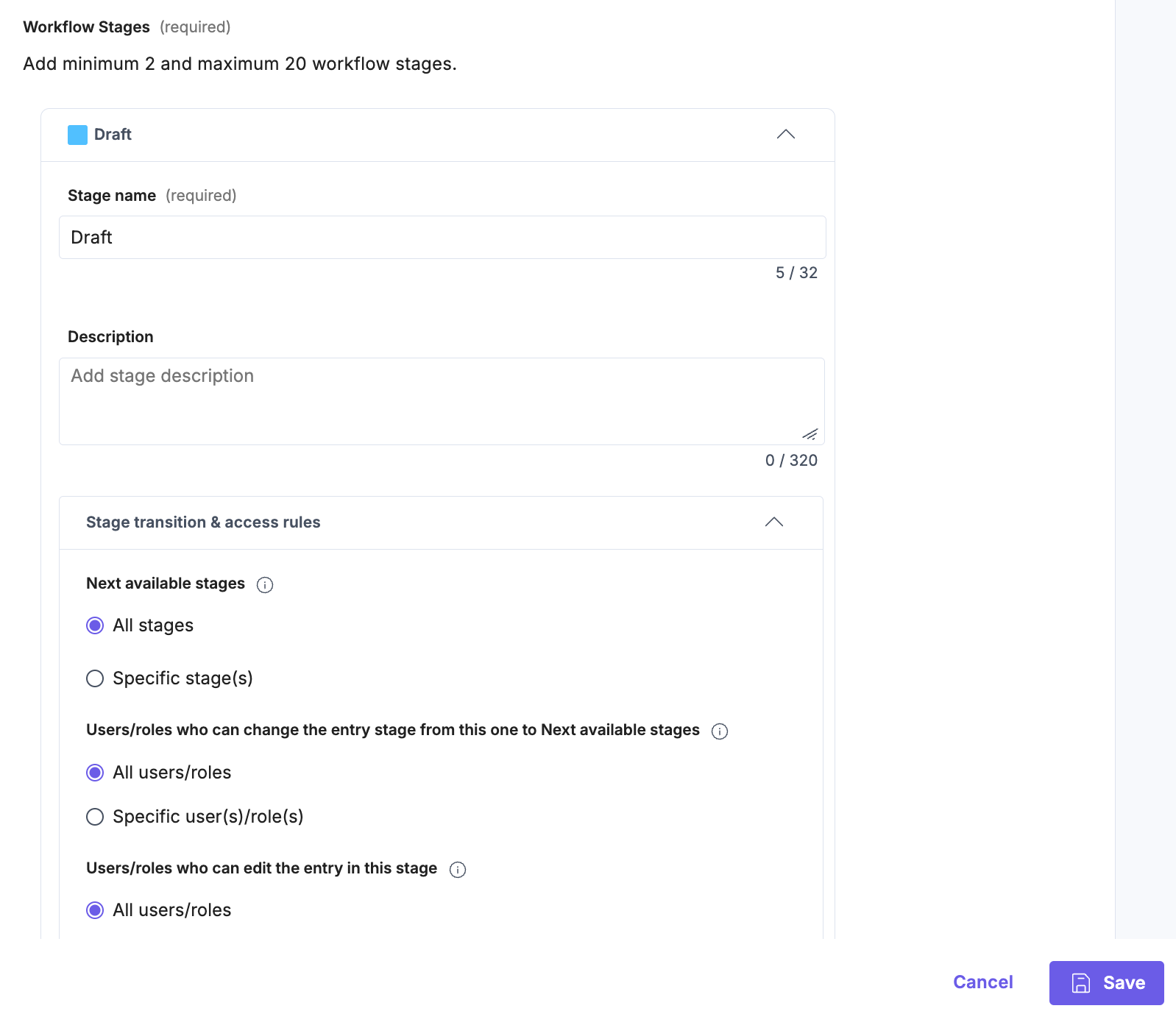How a CMS can streamline your content workflow

Community Author Omu Inetimi provides a step-by-step guide on how to set up content workflows and discusses the benefits of using Contentstack Workflows to streamline your content authoring process. In this guide, you will learn how a CMS can centralize content, facilitate collaboration, automate approvals, enable multi-platform publishing, provide version control and improve organization.
Have you ever managed content across a group of people, an entire organization, or your team? It could seem impossible for multiple people to be working on the same project and for it to stay organized. And we agree, it’s tough to keep everyone on the same page while content moves from draft to publication. Thankfully, there’s a solution to this that makes your life a lot easier. It’s called a content management system (CMS).
Contentstack is one such CMS that can make it easier and faster to handle your content. Let’s look at how a CMS like Contentstack can improve your workflow, and then walk through a simple example of setting it up.
How a CMS improves workflows
One hub for everything
A great thing about using a CMS is it becomes a central point for everything else. You no longer have to worry about your text files being on a different drive from your design assets or your media files. You upload them all to one place, which means you know exactly where to find the latest draft of your articles, and you don’t have to worry about some people not getting an update. If someone wants to see previous versions of the draft, they can do that within the CMS, too. Gone are the days when you have to search through email threads or look through someone’s flash drive.
Collaboration made easy
When your content has to go through multiple stages during the process of creation, collaboration becomes extremely important. By assigning specific roles to your team members—such as writer, editor or publisher—you give each person clear responsibilities within the workflow. When everyone knows the role they have to play, it avoids confusion each step of the way. A lot of CMS platforms also let you set permissions so that only certain individuals have the power to edit content, while others may just be able to comment or make suggestions. This ensures proper access control and reduces the chances of things like duplication or changes that could cause conflicts.
Automated approval processes
One of the most underrated benefits of a CMS is how it can automate your approval workflow. When a piece of content is ready to be reviewed, the system can just send a notification to the manager of that stage. If they approve it after all required changes have been made, it can then be pushed on to the next phase—which could be the final sign-off, publishing, or even fact-checking. This gets rid of the need for constant manual email back-and-forths, in effect shortening the time between the first draft and production-ready content. Additionally, everything is tracked within the platform so you can always check the status of any task.
Publish to multiple platforms
These days, content usually doesn’t live in just one place. You might need your article to appear on your main blog, in a weekly newsletter, and on multiple social media channels. Without a CMS, this can be incredibly time-consuming because you have to copy and paste text or reformat images for each outlet. Contentstack tackles this pain point by letting you publish everywhere from the same interface. You can maintain consistent branding and messaging across various platforms and save yourself from duplicating work. If you decide to update the content later, you can do it once and push the changes out universally, ensuring consistency.
Quick version control
When multiple people are editing the same piece of content, version control can quickly get out of hand. You might accidentally overwrite someone else’s changes or lose track of which file is the most recent one. A CMS, like Contentstack, keeps a detailed record of every edit, including who made it and when. If an update introduces a problem—like incorrect data or a formatting mishap—you can easily revert to a previous version. This safety net boosts confidence and encourages collaboration because no one has to worry about permanently messing up the article if they suggest a change.
Keep it all organized
As your content library grows, finding what you need can become a chore unless you have a solid organization system. Most CMS platforms allow you to tag or categorize your posts, which helps you keep similar articles grouped together. For instance, you might apply tags like “Product Launch,” “Announcements” or “Case Studies” to quickly identify related pieces. Over time, these categories become invaluable for tracking analytics, repurposing evergreen content or simply browsing your repository. You’ll appreciate this capability even more when you need to reference an older post or recycle a piece for a new campaign.
Step-by-Step: Setting up a workflow in Contentstack
Step 1: Navigate to Workflows
In your stack, go to Settings (shortcut: "S") and select Workflows (Windows: "Alt + F," Mac: "Option + F").
On the Workflows tab, click + New Workflow to open a window where you can define your workflow and stages

Step 2: Enter Workflow details
On the workflow creation page, fill in the required details:
Name (required): Enter a workflow name.
Description (optional): Add a description.
Scope: Choose applicable content types:
All Content Types for all entries.
Specific Content Type(s): Select types from the dropdown.
For branches, select either All or specific branches. Once configured, enabled workflows will display a Workflow section in the entry sidebar.

Step 3: Add Workflow stages
Click Add Stage, then:
Enter a Stage Name(required) and a description (optional).
Choose a unique color label for the stage. Ensure all names and labels are distinct.

Step 4: Add Workflow superusers
Superusers can move entries between any stages and edit or delete them without restrictions (though they can’t change workflow settings unless they’re an admin, owner, or developer). Organization owners and stack owners/admins are automatically superusers.
To add more:
- Click the Workflow Superuser(s) field or drop-down.
- Select the user(s) you need. (You can add multiple users, but not roles.)

Step 5: Enable and save Workflow
Toggle "Enable Workflow" to the on position. Once enabled, the workflow option appears in the right-hand Status bar for entries in the content types linked to this workflow.

Last, click on 'Save' to save the workflow, and voila! In just five steps, you've created a workflow that will streamline your entire process of collaboration.
Conclusion
A CMS can take the stress out of managing content. It keeps everything organized, makes teamwork smoother, and helps you get content out faster. If you’re looking for a better way to handle your content, consider giving Contentstack a try. It can help your team stay on track and keep all your content in order.
If you’ve been weighing whether it’s worth adopting a CMS, consider how much time your team currently spends on busywork, status updates and miscommunication. Implementing a tool like Contentstack could dramatically reduce those inefficiencies, letting you launch more content in less time, without compromising on quality. Give it a shot—you might be pleasantly surprised at how much smoother your process becomes, and how quickly your team embraces a more organized approach. When each stage of content creation flows logically into the next, you’re free to spend energy on what really matters.
About Contentstack
The Contentstack team comprises highly skilled professionals specializing in product marketing, customer acquisition and retention, and digital marketing strategy. With extensive experience holding senior positions at renowned technology companies across Fortune 500, mid-size, and start-up sectors, our team offers impactful solutions based on diverse backgrounds and extensive industry knowledge.
Contentstack is on a mission to deliver the world’s best digital experiences through a fusion of cutting-edge content management, customer data, personalization, and AI technology. Iconic brands, such as AirFrance KLM, ASICS, Burberry, Mattel, Mitsubishi, and Walmart, depend on the platform to rise above the noise in today's crowded digital markets and gain their competitive edge.
In January 2025, Contentstack proudly secured its first-ever position as a Visionary in the 2025 Gartner® Magic Quadrant™ for Digital Experience Platforms (DXP). Further solidifying its prominent standing, Contentstack was recognized as a Leader in the Forrester Research, Inc. March 2025 report, “The Forrester Wave™: Content Management Systems (CMS), Q1 2025.” Contentstack was the only pure headless provider named as a Leader in the report, which evaluated 13 top CMS providers on 19 criteria for current offering and strategy.
Follow Contentstack on LinkedIn.






.svg?format=pjpg&auto=webp)
.svg?format=pjpg&auto=webp)
.png?format=pjpg&auto=webp)






.png?format=pjpg&auto=webp)



